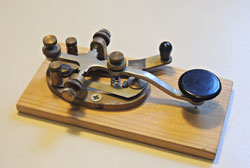 |
|
|
|

|

|
Cloning a Vibroplex bug |
|
|
|
|
|
|
Most people find the word “bug” rather off-putting in both its common meanings of insect and of software defect, but there was a group of people that found it quite attractive. These were telegraph operators, and the "Bug" in question was the semi-automatic telegraph key introduced by the Vibroplex Co. in 1905. |
|
|
|
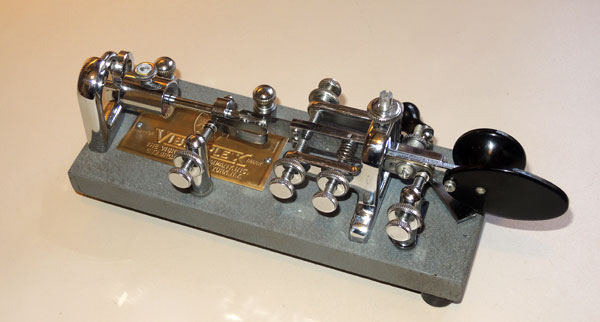 Click photo to enlarge |
|
|
|
The Vibroplex keys were a marvelous piece of
precision mechanics, and as a teenage radio amateur I would have
loved to own one -- were it not totally out of my financial reach.
So instead I did what an electronics hobbyist
would do in those days -- I made do with what I could get: I
built me a Vibroplex clone. I mostly followed an article in “The Young Amateur”, a magazine catering to Israel’s electronics hobbyists in the sixties. You can see a scan of the entire article here. This led me to the device you see here: |
|
|
|
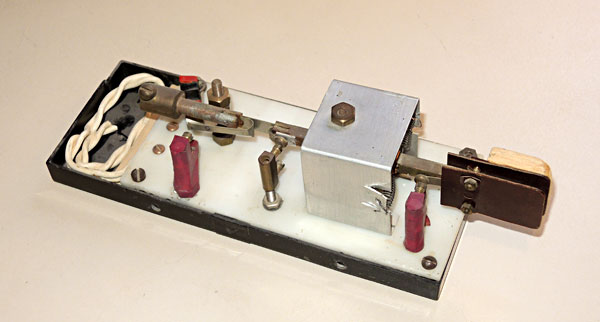 Click photo to enlarge |
|
|
|
It is interesting to compare this makeshift key with its commercial counterpart: |
|
|
|
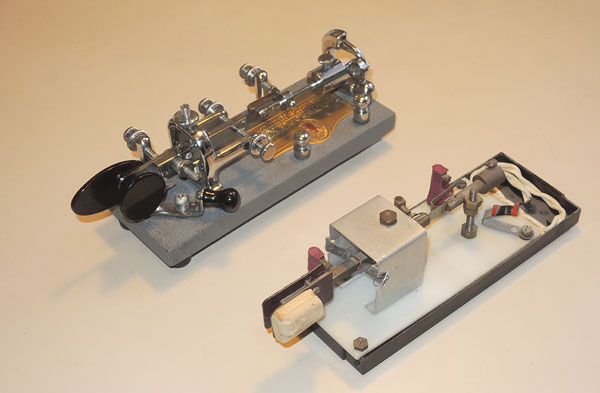 Click photo to enlarge |
|
|
|
As you see, the materials and workmanship are very different. The Vibroplex is solid, heavy (a necessity when actuating it rapidly with sideways swipes!), and made in beautiful chrome plated metal. My version used a hodge podge of improvised materials, from Plexiglas to Balsa wood (I was also building model gliders at the time); the contacts were scavenged from electrical switches and terminal blocks; and the required heavy base was achieved with an inclusion of home-cast lead. |
|
|
|
I bought the real thing on eBay, as a
collectible, many years after going inactive as a radio ham. But the
homemade version was put to real (and quite effective) use in my ham
station, 4Z4GE. It may have been made of scraps and leftovers but
its Dits and Dahs rang fast and true! And why are these keys called Bugs? There’s a wealth of alleged origins, but in any event my commercial key shows the red bug that was (and still is) the Vibroplex trade mark.
― ― ∙ ∙ ∙ ∙ ∙ ∙ ― ― |
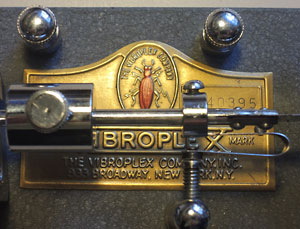 Click photo to enlarge |
|
|
|
|
|
|
|
Home | HOC | Fractals | Miscellany | About | Contact Copyright © 2015 N. Zeldes. All rights reserved. |
|
